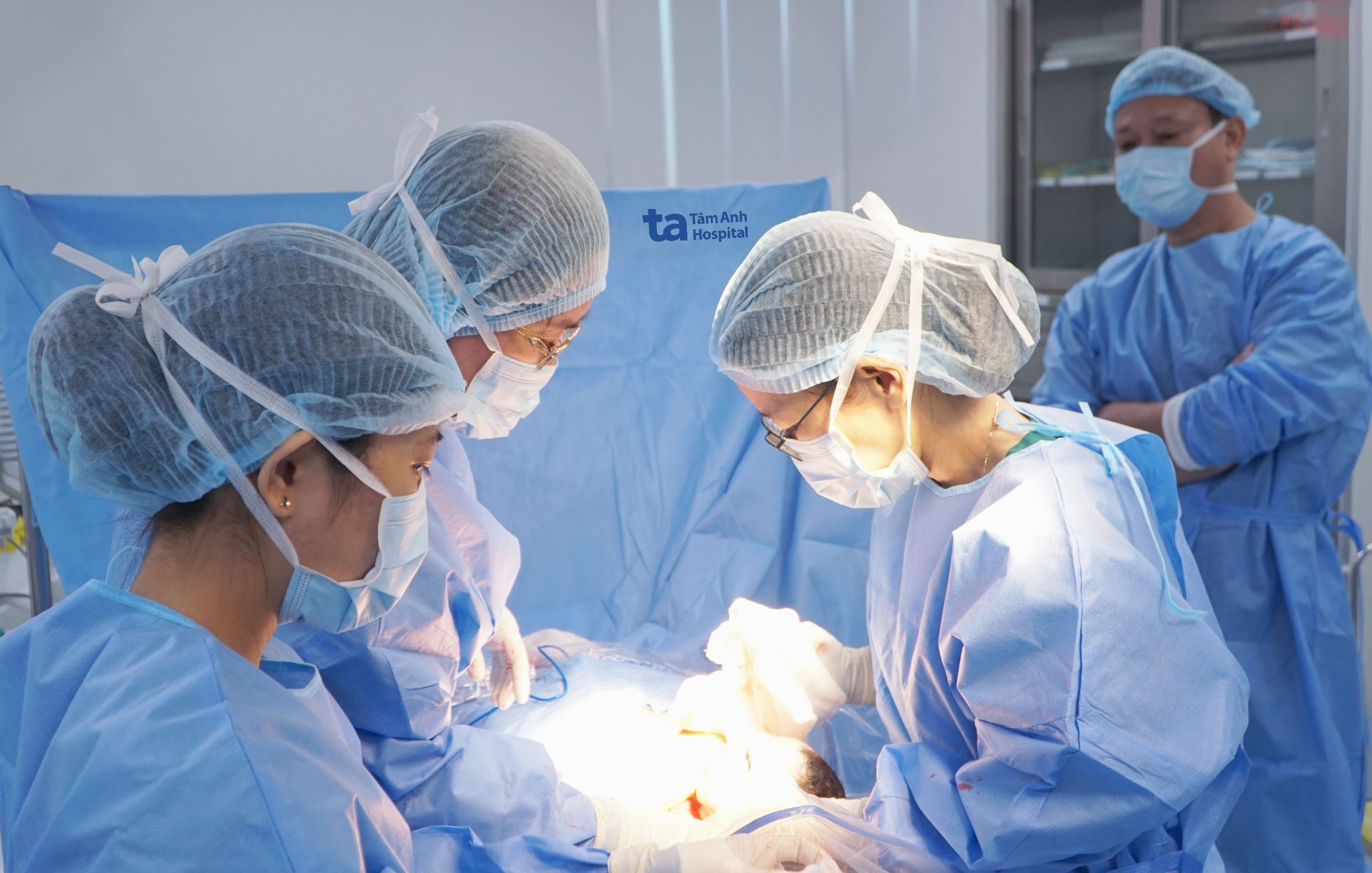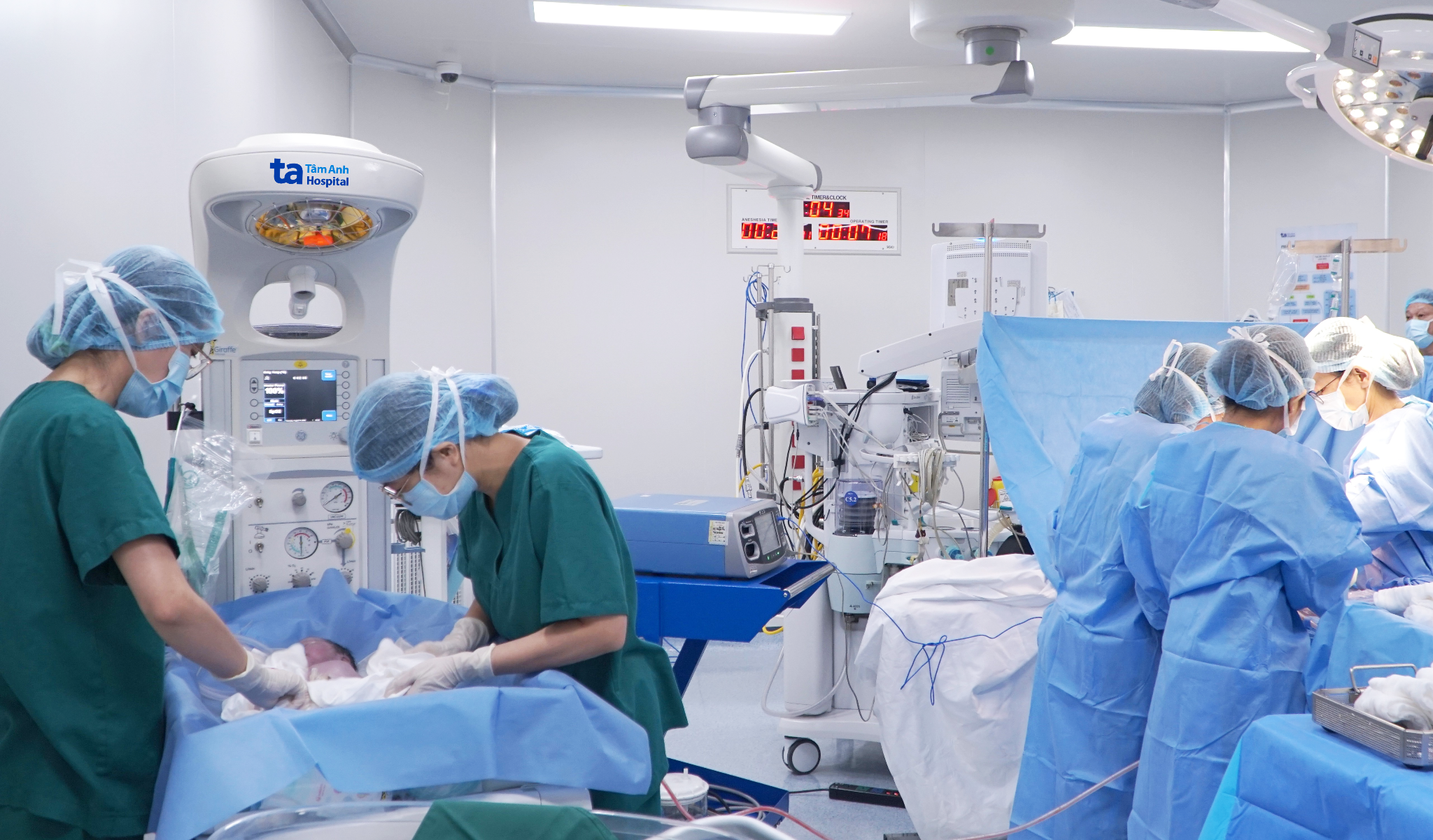A 35-year-old woman underwent in-vitro fertilization and became pregnant with identical twins sharing a single placenta but with separate amniotic sacs. At 16 weeks, an ultrasound revealed a discrepancy in the twins' sizes and amniotic fluid levels, a warning sign of twin-to-twin transfusion syndrome (TTTS), a serious complication common in monochorionic pregnancies.
Doctor Tran Lam Khoa of the Obstetrics and Gynecology Center at Tam Anh General Hospital in Ho Chi Minh City explained that the imbalance in the shared placental circulation leads to disruptions in both the donor and recipient twin. This causes one twin to have excess amniotic fluid, while the other has too little. This syndrome, also known as TTTS, affects approximately 1 in 10,000 twin pregnancies.
TTTS usually occurs in the second trimester, but the earliest detection can be in the first trimester. In severe cases, the mortality rate reaches 80-100% before 26 weeks. The syndrome's progression can be unpredictable, sometimes worsening abruptly.
After being diagnosed with stage one TTTS, the mother was thoroughly informed about the potential risks and underwent bi-weekly ultrasounds. However, less than two weeks later, one of the twins' hearts stopped, indicating stage 5 TTTS.
"TTTS is classified into stages 1 through 5, with stage 5 being the most severe and dangerous, often leading to the death of one twin and a poor prognosis for the other," Doctor Khoa explained. He added that the loss of one twin in the first trimester usually doesn't affect the surviving twin's development. However, a stillbirth occurring later in pregnancy (after 17 weeks) increases the risk of stillbirth, fetal anemia, and brain damage for the surviving twin.
 |
Doctor Lam Khoa (second from the right) performing surgery on the expectant mother. Photo: Tue Diem |
In this case, the doctors decided to leave the deceased twin in utero while monitoring the surviving twin. As anticipated, at 20 weeks, the surviving twin developed anemia and required a 13 ml transfusion of O-negative red blood cells, a universal blood type. Doctors anticipated multiple transfusions, every 2-4 weeks, until the fetus reached maturity, with risks of miscarriage, premature birth, and premature rupture of membranes.
"Despite the pain and challenges, I was determined to keep my baby, as long as there was a glimmer of hope," the mother said. Doctors closely monitored both mother and baby weekly, and fortunately, the surviving twin developed well without needing further transfusions.
 |
Doctors at the neonatal center examining and assessing the baby boy's health in the operating room. Photo: Tue Diem |
At 37 weeks, the Obstetrics and Gynecology Center team decided to perform a C-section to deliver the baby and remove the deceased twin. The baby boy was born safely without any brain abnormalities. Three days after birth, he underwent a comprehensive newborn screening and was discharged.
Tue Diem
*The patient's name has been changed.
| Readers can submit questions about obstetrics and gynecology here for doctors to answer. |












